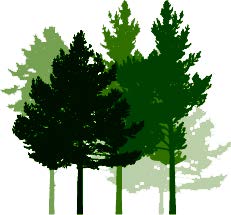Assessed defoliation of Eucalyptus nitens breeding population to quantify genetic basis of palatability to Paropsis charybdis
By Jaroslav Klápšte, Toni M. Withers, Andrew Pugh, and Toby Stovold , July 2019.
Download SWP-T083 (pdf)
Executive summary
Eucalyptus nitens breeding has a long history in commercial forestry in New Zealand. This is currently the most important Eucalyptus species in the country for pulpwood, and because it is fast growing and has good form, it also offers opportunities for solid wood production. Essential operational actions in the breeding programme to target the breeding objectives and for implementation of a breeding strategy, as well as supporting genetic research, were listed in the SWP Technical report by Suontama et al. (2017) (SIDNEY 58661). In 2011, tree breeders decided they needed to understand the range of natural resistance, if any, present within the E. nitens breeding population to the most serious defoliating insect present in New Zealand, Paropsis charybdis (Coleoptera: Chrysomelidae). Seedlings resulting from open pollination of the 180 clones present in the breeding archive at Waiouru were planted out in Howden's block (FR507) on the Southwood Exports estate in Southland, as 30 replicates of single-tree plots (5400 trees). With these trees now eight years old, the appropriate time to assess the growth, and natural resistance to Paropsis had been reached.
As recommended in a previous literature review [Withers, Peters and Suontama (2017) SIDNEY 59185], in order to quantify the range in host palatability present, we needed to boost P. charybdis damage levels in E. nitens prior to assessment. In 2018, background populations of P. charybdis around Howden’s block were still found to be low. The population was therefore supplemented by an adult beetle translocation from the central North Island. This was undertaken in November 2018 with approximately 2384 beetles, with an equal ratio of female to male adult beetles through sections one and two and a slight male bias in section three. Damage steadily built up over the growing season, as evidenced by three assessments conducted using the Crown Defoliation Index (CDI) method and ground observations. A final individual tree assessment was undertaken at the very end of the growing season, in late May 2019. Because of this and due to the height of some trees, the recommendation for assessing leaf number damaged and missing on the distal portion of the branch was not undertaken. Instead, defoliation assessments were limited to a qualitative visual rating of palatability scores (percentile scale of leaf retention from the previous growing season), completed consistently by the same person. At the same time, growth [i.e. diameter at breast height (DBH)] and stem form [i.e. stem malformation (MAL) and branching pattern (BR)] were also recorded.
There was considerable variation of palatability (defoliation from P. charybdis) scores, ranging from low to moderate (10-60%), resulting in low but statistically significant estimates of heritability (0.15) for resistance to P. charybdis feeding. In the future, an additional assessment will include the comparison between before- (December 2018) and after-treatment (May 2019) defoliation by quantifying crown width using remote sensing and analysis of individual tree crowns from UAV imagery, as well as ground-based assessment methodologies (T. Stovold SWP File Note 2019). Weather conditions were average for Southland over the growing season, but populations of P. charybdis may have been insufficient to exert sufficient defoliation pressure on the block, which may partly explain the low heritability estimates.

 Specialty Timbers New Zealand
Specialty Timbers New Zealand
No posts yet
Add a post